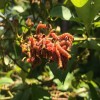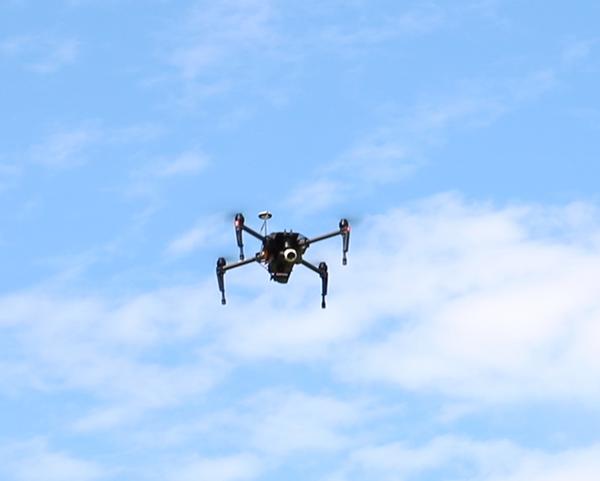
Spotted Wing Drosophila Monitoring Report June 29, 2016
We have now processed blueberry traps through the week of July 12 and blackberry traps through July 6. Spotted …



El inglés es el idioma de control de esta página. En la medida en que haya algún conflicto entre la traducción al inglés y la traducción, el inglés prevalece.
Al hacer clic en el enlace de traducción se activa un servicio de traducción gratuito para convertir la página al español. Al igual que con cualquier traducción por Internet, la conversión no es sensible al contexto y puede que no traduzca el texto en su significado original. NC State Extension no garantiza la exactitud del texto traducido. Por favor, tenga en cuenta que algunas aplicaciones y/o servicios pueden no funcionar como se espera cuando se traducen.
Inglês é o idioma de controle desta página. Na medida que haja algum conflito entre o texto original em Inglês e a tradução, o Inglês prevalece.
Ao clicar no link de tradução, um serviço gratuito de tradução será ativado para converter a página para o Português. Como em qualquer tradução pela internet, a conversão não é sensivel ao contexto e pode não ocorrer a tradução para o significado orginal. O serviço de Extensão da Carolina do Norte (NC State Extension) não garante a exatidão do texto traduzido. Por favor, observe que algumas funções ou serviços podem não funcionar como esperado após a tradução.
English is the controlling language of this page. To the extent there is any conflict between the English text and the translation, English controls.
Clicking on the translation link activates a free translation service to convert the page to Spanish. As with any Internet translation, the conversion is not context-sensitive and may not translate the text to its original meaning. NC State Extension does not guarantee the accuracy of the translated text. Please note that some applications and/or services may not function as expected when translated.
Collapse ▲
We have now processed blueberry traps through the week of July 12 and blackberry traps through July 6. Spotted …

The season’s first question about caterpillars in blueberries has arrived, so growers and homeowners should be on the look …

We’ve now processed trap capture data through the end of June. Blueberry harvest has concluded at most of our …

Looking at the blackberry Scentry data collected on June 20, trap captures of spotted wing drosophila (SWD) appear to …
The North Carolina Department of Agriculture & Consumer Services (NCDA & CS) is offering organic growers the opportunity to …

As the month of July has come to an end, so has the growing season for many of the …

The research sites where we are collecting data are rich environments with many different species of insects. Pest species, including …

We are seeking strawberry growers willing to let us scout their fields for early season strawberry clipper activity. Graduate student …
A recent post from Barclay Poling at the NC State Strawberry Growers Information Portal highlighted several grower questions about …

During the last two weeks, there have been several reports of mealybugs in wine grape vineyards. Mealybugs are sucking …
Twospotted spider mites are the most common and significant pest of strawberries grown in North Carolina. Mite management strategies …

Just in time for Pollinator Week, I wanted to share another update on our work on pollinators in blueberries. While …

Damage from a cold winter can take a while to become apparent. During the summer, I often receive several …

A grower who recently started monitoring for grape root borer moths in their vineyard sent me images of moths …

Blueberries and blackberries are getting close to ripening in North Carolina, and I have fielded a few questions from …

The eFly SWD Working Group has summarized their 2013 assessment of spotted wing drosophila (SWD) impacts in the eastern …

An updated version of the North Carolina Organic Blueberry IPM Guide is now available. The 2014 edition compliments NC …

As blueberry bloom nears its end in most of North Carolina, growers are starting to consider management of petal …

A few growers are starting to harvest strawberries in North Carolina, and as fruit ripen, now is the time …

This factsheet discusses symptoms and control of several leaf diseases common in North Carolina blueberry …

NC State conducted a strawberry Neopestalotiopsis (Neo-P) trial at the Horticultural Crops Research Station in …

This publication discusses flying unmanned aerial vehicles (drones, model aircraft) for commercial purposes. You'll learn …

This publication reviews research between the late 2000s and the 2020s to explore trends shaped …

This article will cover two important scale insect pests of blueberries in North Carolina, terrapin …
Much success in growing tomatoes can be attributed to use of a few proven techniques. …
This publication discusses growing and harvesting head lettuce, the most important salad vegetable grown in …

This guide presents basic facts about seeds, including how they develop, how to store and …